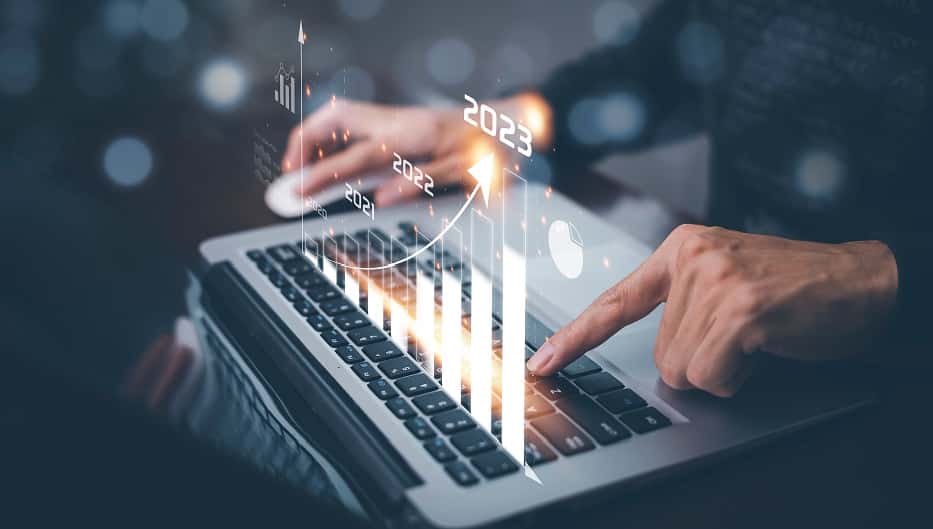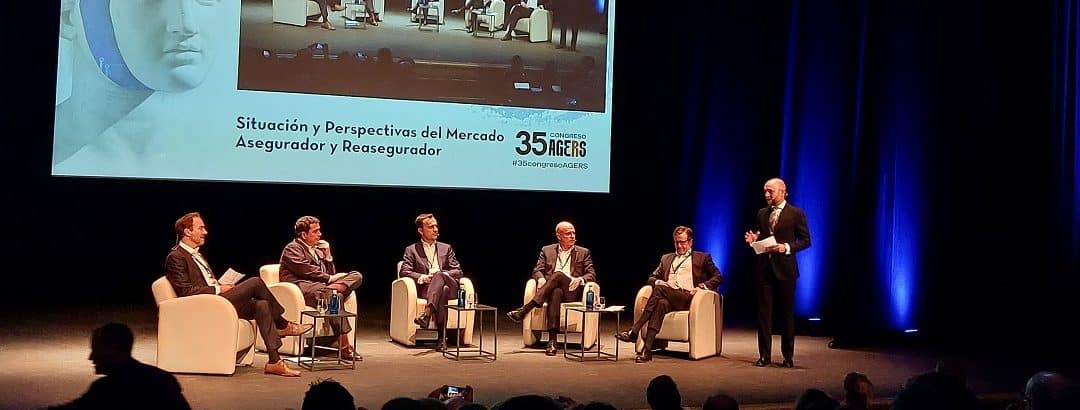Julia Maria Gomez de Avila Segade | 28/12/2022
Technology is revolutionizing the world. Immersed in a profound digital transformation process, we are witnessing its impact on global economic development. We discover the trends that will have the most momentum in strategic sectors in 2023.
Adaptive Artificial Intelligence (AI), the Metaverse, industrial cloud platforms, or sustainable technology are some of the technology trends that, according to the prestigious analyst firm Gartner, will shape 2023. But what developments are expected from these solutions and how will they help the large industry to successfully meet today’s challenges?
Adaptive AI, one step further
AI systems have become omnipresent in many more ways than we can ever imagine. We use smart algorithms in every search we perform on the internet, in every online purchase, or in the movie we select on any platform. But AI is an ever-developing trend that still has a long way to go. 2023 will be particularly focused on the push for adaptive AI, an evolution that will surpass the traditional machine learning models applied to date.
AI systems based on an adaptive learning method use a flexible and continuously enriched approach. This allows the system to monitor and learn from changes as they occur, while continuing to work on older predictions, keeping processes up to date in real time.
The implementation of adaptive AI systems using feedback from usage patterns and the optimization of commercial value has been used to improve business analytics in industries such as materials and chemical manufacturing, where the value generated by the analytics platform has increased substantially.
AI TRiSM, ethical development
As the influence of Artificial Intelligence expands, so does one of its biggest challenges: controlling privacy and ethics. AI TRiSM, short for Artificial Intelligent (T)rust, (Ri)sk and (S)ecurity (Management), seeks to develop methods to apply ethical principles to AI models.
The governance, trust, fairness, reliability, robustness, efficiency, and data protection of the model will be the main aspects supported by this solution. To perform well, organizations should strive to create ethical and transparent models. This is an essential step given the expected development of artificial intelligence and robotics at business level, smart industry or 4.0 technologies, in the coming years.
Among its possible applications, we can highlight how the Danish Business Authority (DBA) links its ethical principles to specific actions, checks the predictions of the models based on fairness tests, and establishes a structure for monitoring the models. Thanks to this solution, 16 Artificial Intelligence models have been implemented and managed that monitor financial transactions worth billions of euros.
Metaverse: the new internet
The theme of the Metaverse has been one of the biggest trends of 2022, but there is still a lot of work ahead for what we understand today as a simple virtual world in three dimensions to effectively become an extension of the real world. What does seem evident is that this evolution of the internet, in which immersive experiences are offered to users, is already unstoppable.
However, we must consider the Metaverse as a combinatorial innovation of various technologies in which the applications and implications will vary significantly depending on the different sectors.
Industries such as telecommunications are already working on developing an industrial Metaverse in which they can leverage the immersive environment to collaborate in creating innovative engineering solutions and solving real-world problems, involving digital twins, the Internet of Things (IoT), and real-time analytics.
Industrial cloud platforms
Cloud platforms for industrial use are another of the technology trends that will shape 2023. These solutions refer to cloud systems or services specifically designed for certain industrial processes such as, for example, the manufacture of pharmaceuticals. They should not be confused with the much more generic commercial cloud.
These are some of the key benefits that industrial cloud platforms could bring to manufacturing environments:
-
- They encourage vertical integration processes. Increased alignment between production processes and the other business units through the creation of a seamless, data-centric collaboration network.
- Better equipment to address Industry 4.0. High capacity to receive data from smart devices and integrate communication protocols.
- Highly customized and variable industrial requirements. Understanding of data, standards, and policies associated with a specific industry.
Digital immune system for enhanced security
To increase protection, observation, automation, and extreme design and testing works together to provide resilient systems that reduce operational and safety risks. Something similar to what our own biological immune system would be.
This is the ability to nullify viruses at the very moment they come into contact with an organization’s computer system. The so-called immune system automatically detects it, analyzes it, and adds detection and protection against this new virus so that it is imminently stopped as soon as it enters the system in the future.
A breakthrough that will have a direct impact on a more sophisticated cybersecurity that will help ensure the security of large infrastructures and other strategic industries. In the case of the aeronautical sector, for example, there are airlines that use site reliability engineering, chaos engineering practices, and a “test first” approach to reduce system complexity and potential vulnerabilities.
Obtaining wireless value
According to Gartner, “the integration of multiple wireless technologies will provide a more cost-effective, reliable, and scalable technical foundation that reduces capital expenditure”. For the prestigious analyst firm, obtaining wireless value ranges from traditional end-user computing to digital labeling solutions to device support at the perimeter.
All of these developments will move wireless capability from a simple communications technology to a much larger digital innovation platform.
There are already applications for use in the logistics sector, where energy harvested from the network has been used to label goods with energy-efficient IoT chips. This sector can use it to track products directly, ensuring their traceability from their origin to the point of distribution. This will also provide greater agility in inventory management and supply chain control.
Sustainable technology, closing the circle
In recent years, innovation has also fundamentally supplemented the achievement of global sustainability goals. From generating energy from renewable sources to reusing materials in the industry with a view to a circular economy, sustainable technology is not only a line of action for companies, but the way forward for a committed society.
This type of technology, which is individually designated but feeds into many of the innovations already mentioned, aims to “preserve the principles of sustainability and minimize environmental impact”. Throughout the years, MAPFRE GLOBAL RISKS magazine has reported on extremely interesting R&D projects aimed precisely at meeting the Sustainable Development Goals (SDGs). From Industrial Eco-design to waste management in the energy sector, we have discussed this structure of solutions that enables energy efficiency, boosts business sustainability, and seeks to add value to the environment in which the activity is conducted. Goals that will undoubtedly hold the technological future of the strategic sectors.
Keep reading… Technological advances in fire protection





